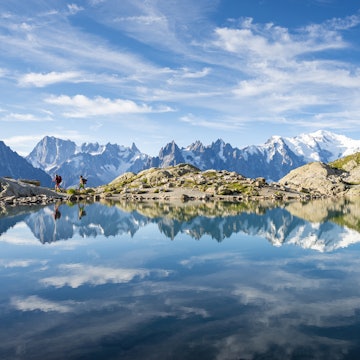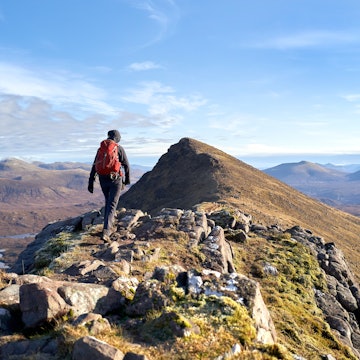

Krimmler Waterfall in Austria's Hohe Tauern National Park. auerimages/Shutterstock
Choosing the best national parks across all of Europe is a tall order – these landscapes are incredibly diverse, offering a breathtaking variation of flora and fauna that attracts visitors from across the globe.
And visiting them during a summer vacation as nature is in full flow and drenched in sunshine...perfection. No matter if you're interested in stunning views, wildlife watching, adventure activities or local history and culture, Europe has the perfect park for you this summer season. Start planning now with this pick of 20 natural superstars.
1. Hohe Tauern National Park, Austria
Best for wildlife tours
Capped off by the 3798m (12,461ft) hump of Grossglockner, Austria’s highest peak and unfurling over a whopping 1856 sq km (717 sq miles), the Hohe Tauern National Park is one of Europe’s largest nature reserves, straddling the states of Tyrol, Carinthia and Salzburgerland.
This is the Alps turned up to the max, with drama on every spirit-lifting bend. Cue a sea of snow-capped summits punching high above the 3000m (9843ft) mark, the longest glacier in the Eastern Alps (the 8.4km/5.2-mile Pasterze) and the country’s highest falls (the 380m/1247ft-high, mist-dashed, rainbow-kissed Krimmler Wasserfälle). And if it sounds impressive on paper, in reality it’s even more mind-blowing. Hohe Tauern is a magnet for wildlife – marmots, chamois, ibex, golden eagles, bearded vultures, you name it – best spotted on one of the ranger tours or hiking trails twisting through the park.
Don’t miss: Buckle up for the Grossglockner High Alpine Road from Bruck in Salzburgerland to Heiligenblut in Carinthia. With an average gradient of 9%, this rollercoaster road is 48km (30 miles) of stomach-flipping hairpin bends and whoa-look-at-that-mountain moments.

2. Jotunheimen National Park, Norway
Best for remote hiking
Jotunheimen (“Home of Giants”) promises great things and – trust us – they are greater than you could ever fathom. In central-southern Norway, this 1151-sq-km (444-sq-mile) national park is a God-like canvas of glaciers, piercing blue lakes, crashing falls and dark, fang-like mountains. Amongst them are the country’s two highest peaks: Galdhøpiggen (2469m/8100ft) and Glittertind (2452m/8045ft). Spend enough time here and you might spot reindeer, elk, mink and wolverines in the park’s quieter, remoter reaches. It’s wild here but accessible, thanks to 50 marked hiking trails. Beyond this, you can hook onto via ferrata (trails with permanent cables and ladders), go river rafting and canter on horseback through spirit-lifting landscapes.
Don’t miss: Some of Norway’s most phenomenal hikes – Besseggen ridge and the ascents of Falketind and Galdhøpiggen among them – command astonishing views.

3. Swiss National Park, Switzerland
Best for lakeside trails
When an outdoors-mad land like Switzerland has just one national park, you can bet it’s a darn good one. Shouldering up to Italy in Graubünden’s Lower Engadin valley, the Swiss National Park is a 172-sq-km (66-sq-mile) visual feast of glacier-frosted peaks, rushing streams, pastures, larch and pine woods, and high moors spattered with jewel-colored lakes. This is a taste of the Alps before the tourists rocked up.
Nature has been left totally to its own devices: no trees have been felled, no meadows cut and no animals hunted since the park was founded in 1914. Chuck on hiking boots and head for the park’s trail-laced heart, perhaps on one of the guided ranger walks, keeping your eyes peeled for ibex, chamois, golden eagles and bearded vultures – and elusive alpine flowers like edelweiss.
Don’t miss: If you have time for just one walk, make it the Lakes of Macun. Starting in Zernez, this corker of a 21km (13-mile) day hike treks up to a 2600m-high (8530ft) alpine plateau bejewelled with 23 lakes that shimmer turquoise, topaz and sapphire.

4. Oulanka National Park, Finland
Best for getting away from it all
Hear that? Silence. Isn’t it a precious thing? Nudging the Russian border in Finland’s little-discovered east and reaching from Koillismaa to Lapland, Oulanka National Park is a great escape for tiptoeing away from the world for a spell. This was Sámi territory until the 17th century – and the nomadic spirit lives on. Rivers and rapids surge past fells, cliffs, gorges, moors, swamps and dense boreal forest of pine, birch and spruce. The rush of water is often the only sound you will hear exploring on foot, by bike, canoe or raft. Brown bears, moose, reindeer, lynx and wolverine are among the park’s elusive residents (bring binoculars and hope to get lucky).
Don’t miss: Hiking the 82km (51-mile), three- to four-day Karhunkierros (Bear’s Ring) trail from Hautajärvi to Rukatunturi fell drops you properly into Oulanka’s wildest reaches. Highlights include the steep-sided Oulanka Canyon and the crashing Jyrävä falls.

5. Black Forest National Park, Germany
Best for fairytale beauty
Tucked away in Germany’s southwestern pocket, the 100-sq-km (39-sq-mile) Black Forest National Park looks ripe for a Grimm bedtime story, with its fairy-tale landscapes of glacier-scoured valleys, heather-flecked moors, glassy lakes and deep, dark fir forests where you half expect a witch or a woodcutter to pop out from behind the trees. Hike or cycle here and you will often be alone with drumming woodpeckers, calling cuckoos (the region is, in fact, the birthplace of the cuckoo clock) and the odd fleeting deer. The national park center at Ruhestein is the go-to for maps and info on trails and wildlife.
Don’t miss: Drive the B500 Schwarzwaldhochstrasse (Black Forest Highway) from the elegant spa town of Baden-Baden to Freudenstadt. Stop off at the gorgeous glacial cirque lake of Mummelsee and hike up to Hornisgrinde for views rippling across the forest.

6. Parc National des Écrins, France
Best for experienced hikers
The French Alps are at their wildest in France’s second-largest national park, 918-sq-km (354-sq-mile) Parc National des Écrins. Glaciers have shaped this out-of-this-world mountainscape of forests, Alpine meadows, crystal-blue lakes, boulder-smashing rivers and peak after cloud-wisped peak, some punching more than 4000m (13,123ft).
Highest of the lovely lot is 4102m (13,458ft) Barre des Écrins. You can return time and again and never walk the same trail twice, with 740km (460 miles) of paths to roam. Trodden by local shepherds for centuries, these trails are best explored between mid-June and mid-September. In this vast park, the only inhabited hamlet is Dormillouse, but mountaintop refuges (huts) let you strike out on long-distance treks.
Don’t miss: Epic hikes take you deep into the national park, such as the Glacier Blanc, the high-altitude hike from the village of Dormillouse, and a challenging hike and climb to the glaciated summit of Barre des Écrins. For a glimpse of the park’s incredible biodiversity, hook onto the five-hour Grande Cabane trail reaching into the Fournel valley.

7. Parque Nacional da Peneda-Gerês, Portugal
Best for quiet isolation
If you crave off-grid isolation, this 703-sq-km (271-sq-mile) national park in Portugal’s far north is the dream. The landscapes are mind-blowing, with granite mountains towering above oak and pine forests, mountain streams carving up valleys and aerie-like villages and espigueiros (granaries built on stilts) perching atop hillsides overlooking terraced fields. With so much unperturbed nature here, ibex, deer, wild horses and Iberian wolves find plenty of hiding places. It’s easy to give civilization the slip, especially in the lesser-visited north of the park, accessed from the Lamas de Mouro gateway. The park is terrific for hiking, with glacially eroded mountains rolling to wildflower prairies, waterfalls dropping to deep ravines, and wild horses grazing the savannah.
Don’t miss: Peneda, with its domed peak, pilgrimage church and ruined Moorish castle, makes a great base for the Trilho Castrejo, a 17km (11-mile), seven-hour loop striking out along some of the park’s oldest footpaths.
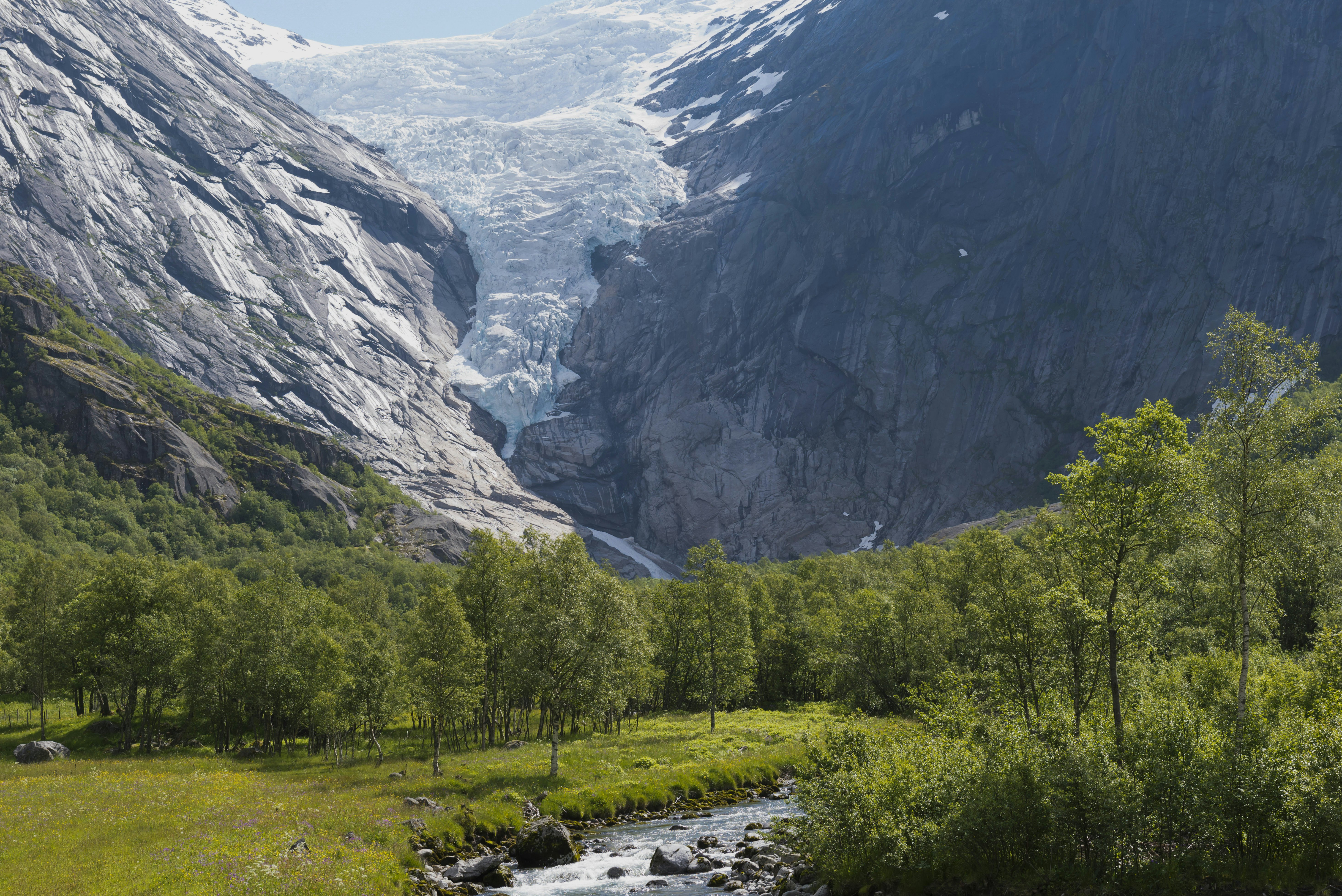
8. Jostedalsbreen National Park, Norway
Best for incredible glaciers
One word: glaciers. While Jostedalsbreen National Park in Norway’s Western Fjords is no one-hit wonder, eyeballing the 60km-long (37-mile) Jostedalsbreen – the largest ice cap in mainland Europe – tops many wish lists. This staggering sweep of eternal ice floors you with its beauty (even more so if you have the stamina and skill to hike on it). The glacier separates two of the world’s longest fjords, the Sognefjord and the Nordfjord, and their shapely peaks and ice-blue waters. Most visitors head straight for big-hitters like Briksdalsbreen, an arm of the great glacier, best appreciated on an uplifting 5km (3-mile) hike through the valley.
Don’t miss: Cast a wider net, visiting lesser-known wonders like Kjenndalsbreen, another offshoot of the glacier, for fewer crowds and the chance to kayak, boat, canoe and picnic at the peak-clasped, brilliantly turquoise lake of Lovatnet.

9. Parco Nazionale delle Dolomiti Bellunesi, Italy
Best for geological wonders
Picture an Eden-like scene: a grass-carpeted valley, birds chirping in the bottle-green trees, a twinkling brook, a castellated line of mountains formed of an almost luminescent pale rock. In Italy’s Parco Nazionale delle Dolomiti Bellunesi, geology is theater. The scenic drama has been formed through the different consistencies and brittleness of the rock, which has spectacularly eroded and sculpted jagged formations, and hollowed-out deep, wide valleys and corridor-narrow gorges. This drama is ramped up by the contrast between the soft, gentle curves of the pastures and the sudden eruption of vast, sculptural mountains, each prong like a cathedral tower.
Don’t miss: Slap on a backpack to hike the iconic Alta Via 1, a ravishing, heart-racing 125km (78-mile) stomp over the mountains from Dobbiaco to Belluno, with overnight stays at sky-high rifugi (huts).

10. Teide National Park, Spain
Best for stargazing
All eyes are on the 3718m (12,198ft) Pico del Teide volcano in Tenerife’s showstopping Parque Nacional del Teide. Punching above a crater-blasted, rust-red, lava-sculpted moonscape, Spain’s highest peak is one of the island’s biggest pulls. Most head up the easy way – via cable car – but you can dodge the crowds by trekking up on foot. If you don't want to hike up Mt Teide, easier walks dip into the park. You’ll find otherworldly volcanic trails along TF-21 – the one road at the base of the peak – including those around the bizarre Roques de García rock formations.
Don’t miss: On clear, moonless nights, the national park has hands-down some of the best stargazing in the northern hemisphere. Year-round, you can see plenty with just a simple pair of binoculars: meteor showers, the Milky Way and 83 of the 88 officially recognized constellations. The blanket of glittering stars is impressive observed with the naked eye, but for more cosmic insight book onto a guided tour at Observatorio del Teide.

11. Hortobágy National Park, Hungary
Best for ancient culture
Hungary’s vast prairies carry more than a whisper of the wild, wild West. But the puszta – the flat grasslands and marshes of Hortobágy National Park – stir the Hungarian soul. They are the bedrock of this country’s agrarian history. The national park is part of the Great Hungarian Plain, which rolls across the eastern half of the country. This was once the homeland of csikósok, skilled herders who thundered across the prairies. Pastoral lifestyles of lapsed centuries are frozen in time in Hortobágy: traditional sweep-pole wells dot its meadows, while herders’ inns retain their original character. And while the csikós’ lifestyle has faded away, the descendants remain, many of them still learning horse-riding arts.
Don’t miss: Ride in a horse-drawn wagon across the vast prairie lands, spotting free-roaming Hungarian grey cattle at Máta Stud Farm.
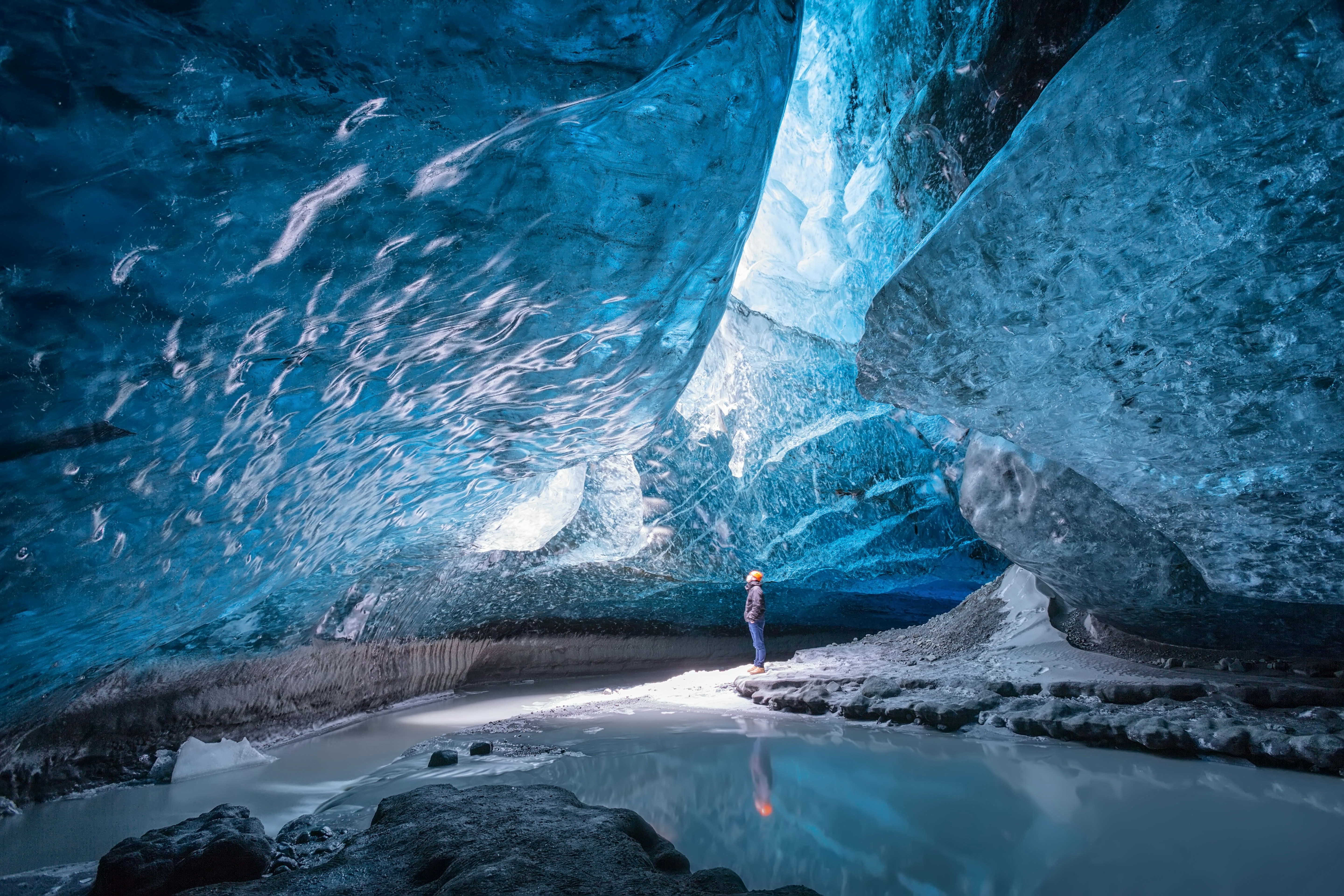
12. Vatnajökull National Park, Iceland
Best for vast volcanic landscapes
Europe’s largest protected area, Vatnajökull National Park is a staggering smorgasbord of every dramatic natural landscape Iceland has to offer, winging you back to the last ice age. As you roam this vast reserve, you’ll find calving glaciers, bubbling geothermal springs, rocky canyons, snow-capped mountains, featureless ice sheets, silent lagoons, buried volcanoes, eerie ice caverns, surreal basalt formations and even wandering herds of reindeer. Sprawling over 14,100 sq km (5444 sq miles), the park takes up a hefty chunk of eastern Iceland, so most people take small bites from the edges – from Ásbyrgi in the north, or from Rte 1 as it sneaks between the ice sheet and the eastern seaboard.
Don’t miss: Natural wonders include horseshoe-shaped Ásbyrgi Canyon’s rock formations and volcanic caves, crash-bang falls like Dettifoss and Svartifoss, and the extraordinary Lakagígar Crater Row.

13. Vikos-Aoös National Park, Greece
Best for deep gorges and valley hikes
Thundering rivers, pristine forests, flower-freckled, sheep-bobbled meadows and glittering lakes: you can imagine the Greek gods having a ball in heavenly Vikos-Aoös National Park. Shouldering up to the Pindos Mountains and Albanian border in northwestern Greece’s overlooked Epiros region, the park whisks you from tranquil to high-octane in a matter of minutes. On one hike, you’ll stand by the shore of Drakolimni, a lake as still as polished marble. The same day, your senses will whirl at the sight of the 20km-long (12 miles) Vikos Gorge, plunging 1km (0.6 miles) deep. By car, you’ll trundle over serene stone bridges and then moments later clutch the steering wheel around needlepoint bends.
Don’t miss: Hike into the quiet backcountry to Vikos Gorge, so deep it graces the Guinness World Records list, and Greece's second-highest peak, Mt Smolikas (2637m/8652ft) on the park’s remote north side.

14. Durmitor National Park, Montenegro
Best for river rafting and summer hikes
Mother Nature really pulled out all the stops in Montenegro’s rugged and astonishingly dramatic Durmitor National Park. Glaciers and underground streams have carved out this sensational wonderland of jagged limestone peaks, virgin black-pine forests carpeting mountainsides, deep canyons and ice caves.
And amid all this are the 18 glacial lakes known as gorske oči (mountain eyes) that range in color from frosty blues to deep navy and turquoise, like precious beads sprinkled across the massif. Durmitor has 48 peaks above 2000m (6562ft) in altitude, with the highest, Bobotov Kuk, measuring 2523m (8278ft), making the park the perfect place for hiking, especially in the warmer months. There are spectacular karst or forest trails, and wow-eliciting views that stretch hundreds of kilometers.
Don’t miss: Go river rafting in the Tara Canyon that cuts through the mountains at the park’s northern fringes. The gorge reaches up to 1300m (4265ft) deep (the Grand Canyon plummets just 200m/656ft deeper).

15. La Maddalena National Park, Italy
Best for diving and snorkeling
Northwesterly mistral winds and waves have shaped and sculpted pink granite and schist into bizarre rock formations in Parco Nazionale dell'Arcipelago di La Maddalena, a ravishingly pretty geomarine park in the bluer-than-blue Bocche di Bonifacio strait between Sardinia and Corsica. This World Heritage site has seven main islands and a sprinkling of more than 50 islets, with cliffs carpeted in fragrant myrtle, broom and rock rose and coves where frost-white sands slide into azure seas. What lies above ground is only half the story, however. Slip on a snorkel or diving mask to swim among vibrant coral, shoals of brilliant fish, stingrays, starfish and loggerhead sea turtles.
Don’t miss: The national park’s beaches, with sugary sands, granite boulders and gin-clear turquoise seas, are Italy’s answer to the Seychelles. Among the loveliest are Bassa Trinità on La Maddalena, Cala Corsara on Spargi, and pink-tinged Spiaggia Rosa on Budelli, though it's closed to visitors to protect its vulnerable sands.

16. Sarek National Park, Sweden
Best for wild solo adventures
If you’re up for a walk on the wild side of Sweden, it doesn’t get wilder than Sarek National Park in Lappland, named after its highest peak, 2098m (6883ft) Sarektjåhkkå. Hiking on a remote trail here in the morning silence is like witnessing the dawn of creation: rushing rivers ribbon through U-shaped valleys, bare, rugged peaks razor above pristine mountain birch forests and flower-flecked meadows, and some 100 glaciers glint atop stark heights.
You’re just as likely to spot wildlife (golden eagles, kestrels and buzzards in the skies and giant moose, lynx, bears and wolverines on the ground) as you are other human beings. Infrastructure is sparse and marked trails precious few, making this one of Europe’s last great off-the-radar adventures. You’ll face harsh terrain and volatile weather, but the rewards are many.
Don’t miss: Sling on a backpack and take your camping kit and compass to hike a stretch of the Kungsleden (the King’s Trail), a long-distance stomp into the Arctic wilds of northern Sweden.

17. Plitvice Lakes, Croatia
Best for tumbling waterfalls and stunning lakes
It’s as if God forgot to turn the tap off in the World Heritage Plitvice Lakes National Park, the scenic jewel in Croatia’s crown. In the country’s Adriatic hinterland midway between Zagreb and Zadar, you are bombarded with natural beauty, with waterfalls, cascades and mineral-rich underground springs flowing swiftly over natural dams known as tufa barriers, and a necklace of jewel-colored lakes in every imaginable shade of blue, green and turquoise trailing high across the forests of the Dinaric Alps. Come in spring for thunderous waters, summer for clouds of butterflies, autumn for leaf-peeping magic and winter for icy lakes and frozen falls. Bears, wolves and lynx hide in the remoter reaches of the park’s old-growth fir and beech forests.
Don’t miss: Turquoise, emerald, cobalt, azure…each of the 16 lakes has a different hue. See them all on 22km (14-mile) Route K, a quiet, challenging and spectacular full-day hike through the park.
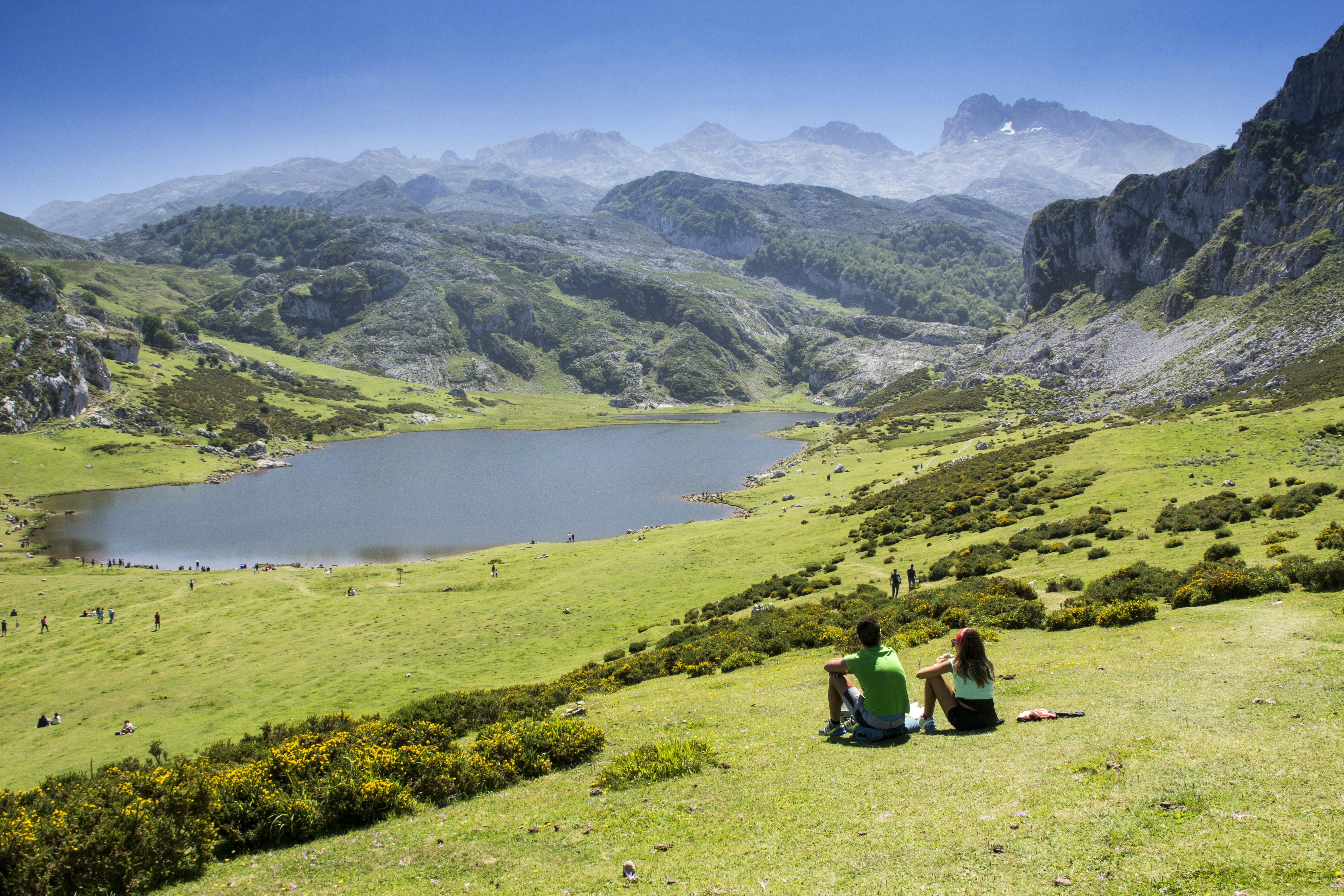
18. Picos de Europa, Spain
Best for ancient cave art
Be prepared to be floored by the 646-sq-km (249-sq-mile) Parque Nacional de los Picos de Europa in Asturias in northern Spain, which delivers a massive hit of mountain loveliness just a whisper away from the Atlantic. Founded in 1918 and straddling the regions of Cantabria and Castilla y León, this is one of Spain’s first two national parks. Scores of well-signposted hiking trails knit together lush meadows, glassy lakes, deeply gouged river gorges and dramatic limestone peaks that offer a safe haven to wildlife, including elusive wildcats, brown bears and Iberian wolves. Humans have etched their mark on these extraordinary landscapes over millennia, too, with wonders like the cave art at World Heritage–listed Cueva de Tito Bustillo, including superb horse paintings probably done around 15,000 to 10,000 BCE.
Don’t miss: The gasp-eliciting 2519m (8264ft) Picu Urriellu, also known as El Naranjo de Bulnes, is a great thumb of limestone. It's a magnet to experienced climbers who scramble up its walls, or take a hike to its base for heart-racing views.

19. Triglav National Park, Slovenia
Best for otherworldly beauty
A masterstroke of nature, Triglav National Park in Slovenia’s Julian Alps is eyes-on-stalks beautiful, especially when you see it from a mountain hut as the morning mist rises. Spread across 840 sq km (324 sq miles), this is one of Europe’s biggest nature reserves and a scenic treat of deep ravines, canyons, caves, forests, Alpine meadows, craggy, snow-capped peaks and rivers so shockingly turquoise they look fake. The centerpiece is the country’s highest mountain, 2864m (9396ft) Mt Triglav, which you can ascend on a via ferrata for top-of-the-beanstalk views, or hike or raft along an exquisite river in the Soča Valley. Mirror-clear Lake Bohinj is the scenic motherlode, with unmissable spots like rainbow-kissed Savica Waterfall, deep in a gorge, and the Church of St John the Baptist.
Don’t miss: Drive the madly corkscrewing Vršič Pass, linking Kranjska Gora to Trenta in the Soča Valley, for tremendous views of peaks, forests and valleys on repeat.

20. Cairngorms National Park, Scotland
Best for Munro bagging
Wild Scotland in overdrive, the Cairngorms are bonnie indeed, with glens, Scots pine forests, lochs and rocky peaks rippling across 4528 sq km (1748 sq miles), an area twice the size of England's Lake District. This hefty chunk of the Scottish Highlands is a cracking place to seek out solitude, hit the trails in summer and dive into winter snow, as well as meet the UK’s only herd of free-ranging reindeer.
Chuck on boots to hoof 18km (11 miles) up a pair of classic Munros – 1245m (4085ft) Cairn Gorm and 1309m (4295ft), cairn-topped Ben Macdui – for on-high views of the park, or go for a ramble through the trail-woven Caledonian pine forest of the Rothiemurchus Estate, keeping an eye out for capercaillie and red squirrels. If the weather turns nasty, check out the swanky ballroom at Balmoral Castle, built for Queen Victoria in 1855.
Don’t miss: In the north of the national park around Tomintoul and Glenlivet, the Cairngorms Dark Sky Park is stargazing central, with views of meteor showers, shooting stars, the Milky Way and — if you’re in luck and time it right — the northern lights.









